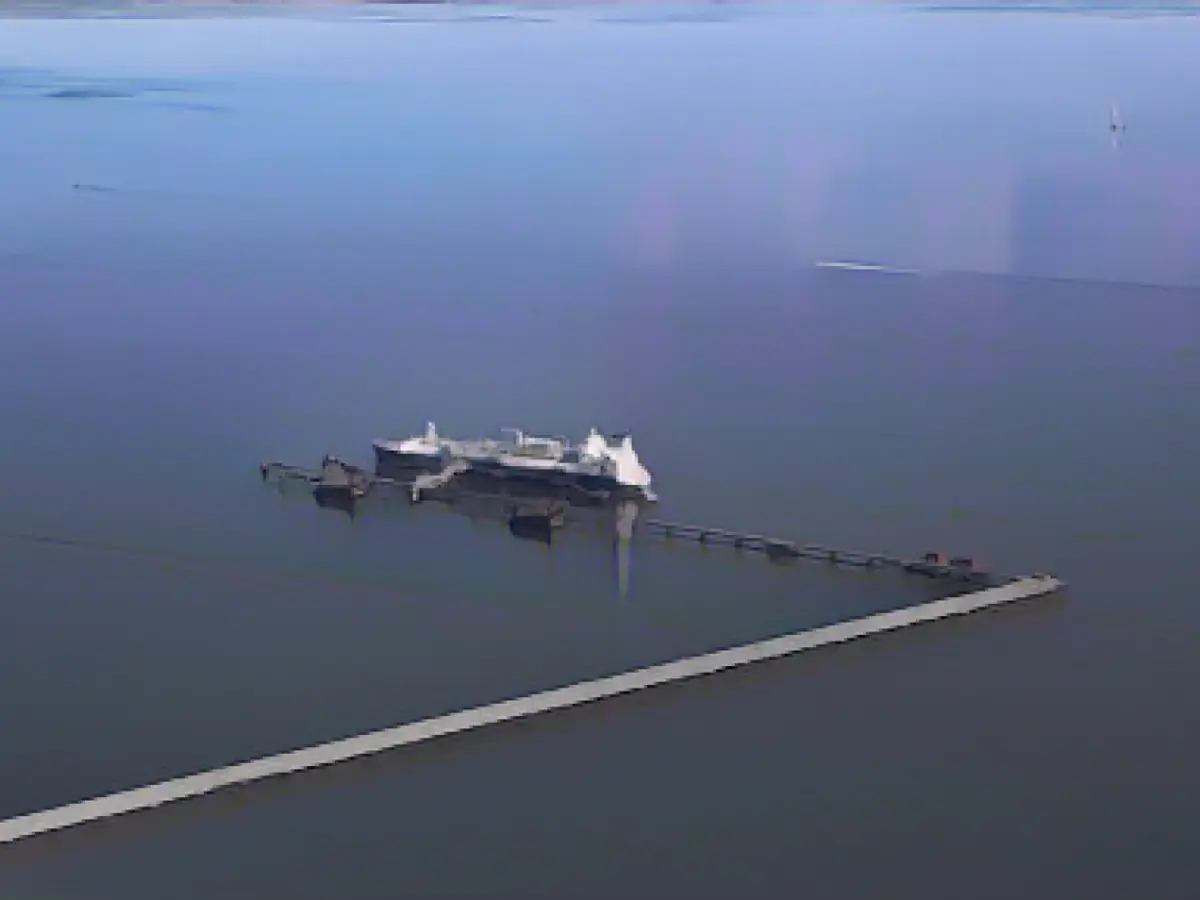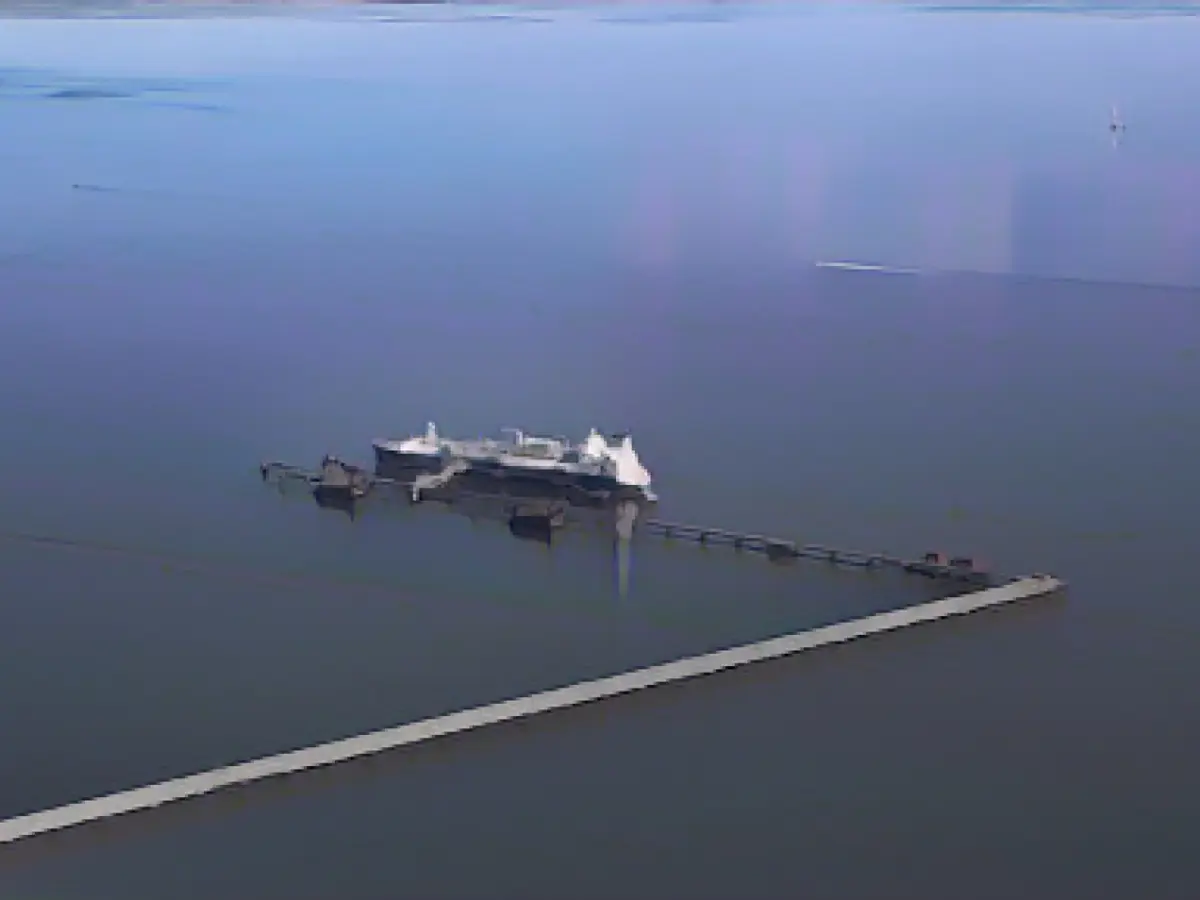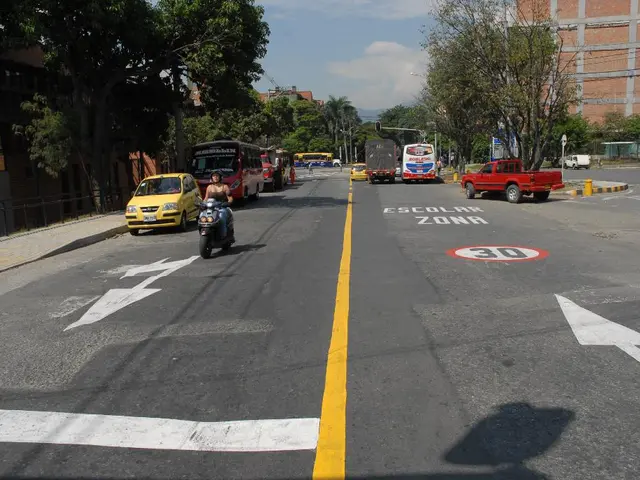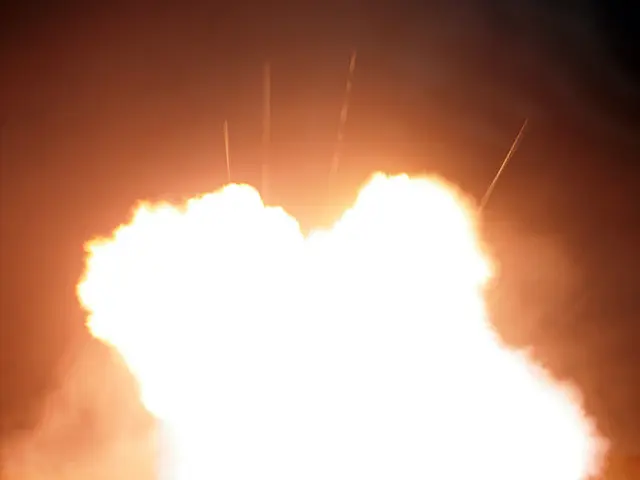With a final welded seam, another 70-kilometer long connecting pipeline for the LNG terminal in Wilhelmshaven has been wrapped up, marking the end of around nine months of construction. Announcing the news on Thursday, energy supplier EWE revealed that the golden seal was made on a construction site near Westerstede, Ammerland. The pipeline, slated for operation from the beginning of 2024, will transport converted liquefied natural gas (LNG) to gas storage facilities in the district of Leer and into the long-distance gas network. Boasting a capacity of six billion cubic meters per year, it's enough to supply energy to around four million households, according to EWE.
For about a year now, LNG has been making its way to Wilhelmshaven via the first floating import terminal, which converts it back into a gaseous state on the special ship "Höegh Esperanza" and then feeds it into the gas grid. To connect with this process, Open Grid Europe (OGE) built an initial connection pipeline last year. The Wilhelmshaven-Leer pipeline built by EWE near Sande, now connects to this pipeline and runs through three districts: Friesland, Ammerland, and Leer, connecting to the gas storage facilities on the Ems.
A game-changer for energy security
With more LNG landings at the Jade imminent - thanks to a second floating LNG terminal launching in Wilhelmshaven soon - this new pipeline will undoubtedly contribute to Germany's energy security. Lower Saxony's Economics Minister Olaf Lies (SPD) acknowledged this on the occasion of the final weld, referring to the pipe as a crucial "building block" for Germany's energy security and an essential component of resilient, sustainable, and affordable energy supply in the long term.
Green hydrogen potential
While the new pipeline is currently designed to transport natural gas, EWE hints at its potential to switch to green hydrogen. If green hydrogen production plants are established, the pipeline could become operational by 2027 to contribute significantly to climate protection.
A major undertaking of 4,200 pipes and 5,000 welds
Over the past nine months, around 4,200 diameter-60 cm pipes have been laid, and around 5,000 welds made for the new pipeline since construction began in March 2023. A significant investment of around 200 million euros has gone into the project, which EWE has successfully completed in "record time," as stated by Chief Technical Officer Urban Keussen.
The technical acceptance of the pipeline has already taken place, implying that it is ready to transport gas. Trial operations are just around the corner, with the estimated official operation date set for the beginning of 2024.
More pipeline construction on the horizon
The pipeline expansion in the northwest is not coming to an end with the EWE pipeline, as another section, approximately 60 km long, is planned for 2024. This pipeline will run from the natural gas storage facilities in Etzel, Wittmund, to a compressor station in Wardenburg, south of Oldenburg. Due to the transportation of natural gas from Norway and the Netherlands, the current pipeline network in the northwest is already "almost at full capacity."
[1] Clean Energy Wire [2] Business Insider [3] Tree Energy Solutions [4] Greenhouse Gas Information Partnership [5] theenergyfloor.com






